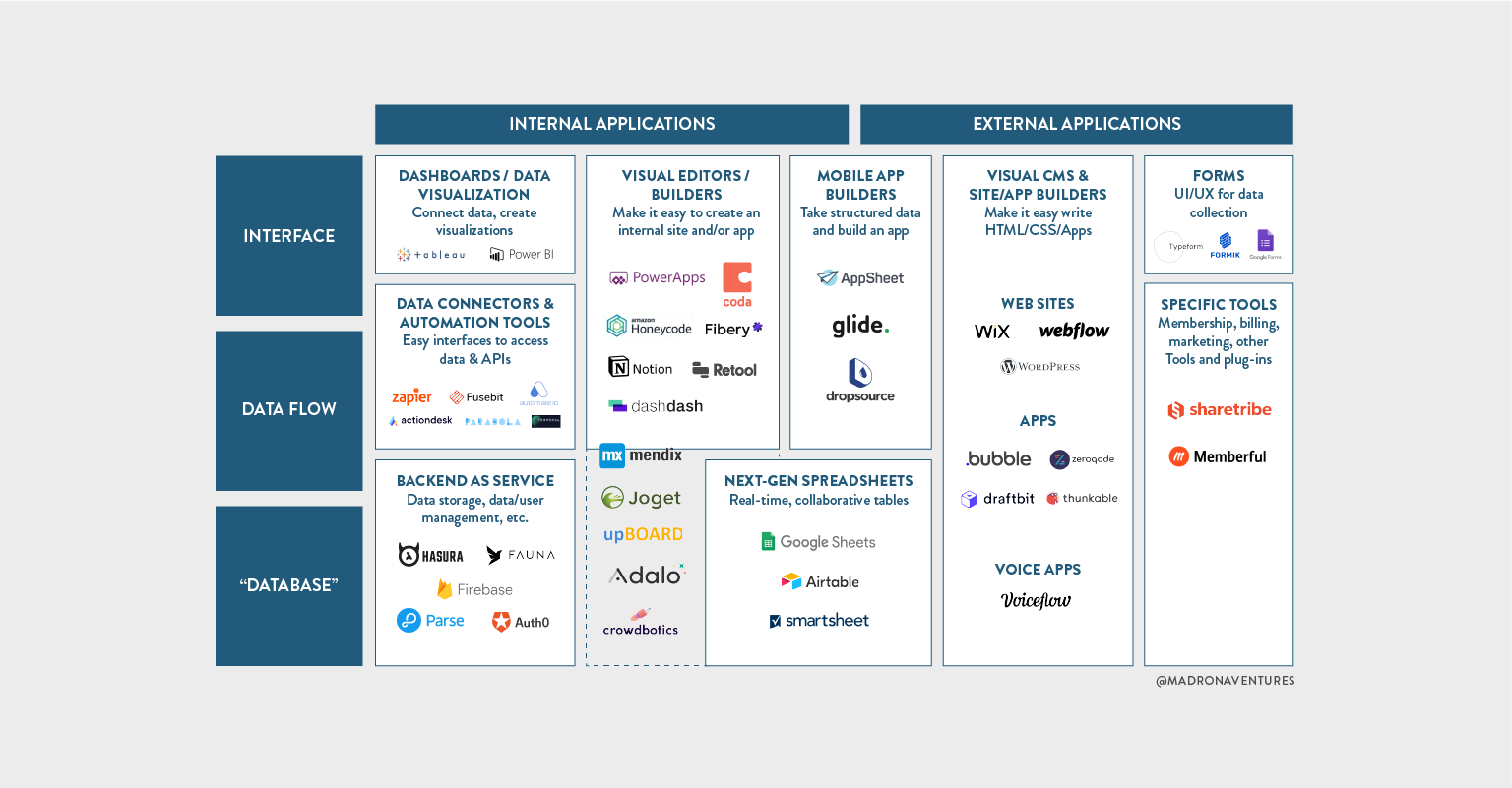No-Code Solutions for Open Platform Database Production: Construct Without Coding Skills
A Comprehensive Overview to Applying Scalable Data Sources Without the Need for Coding Competence
In the contemporary landscape of information management, the capacity to carry out scalable databases without coding proficiency is ending up being increasingly essential for companies of all dimensions. This guide aims to illuminate the process, concentrating on easy to use devices and user-friendly user interfaces that demystify data source configuration. By taking a look at vital attributes, reliable approaches for implementation, and ideal practices for ongoing management, we will address how even non-technical users can confidently navigate this complex terrain. What are the essential elements that can truly empower these individuals to take advantage of scalable databases properly? The solutions might redefine your strategy to information monitoring.
Understanding Scalable Data Sources
In the realm of contemporary data management, scalable databases have actually arised as a critical option for organizations seeking to handle boosting volumes of info successfully. These databases are made to accommodate development by permitting the smooth enhancement of resources, whether via horizontal scaling (adding extra devices) or upright scaling (upgrading existing makers) This flexibility is necessary in today's busy digital landscape, where information is generated at an unprecedented price.
Scalable data sources usually make use of distributed styles, which enable data to be spread across several nodes. This circulation not just improves efficiency however additionally provides redundancy, making sure data schedule also in case of equipment failures. Scalability can be an essential aspect for different applications, consisting of ecommerce platforms, social media sites networks, and large data analytics, where user need can vary considerably.
Additionally, scalable data sources commonly include robust information uniformity designs that stabilize efficiency and dependability. Organizations must consider their particular needs, such as read and create speeds, information stability, and mistake resistance when selecting a scalable data source solution. Eventually, understanding the underlying principles of scalable databases is crucial for businesses aiming to grow in a progressively data-driven globe.
Key Functions to Look For
When assessing scalable databases, numerous key features are vital to making sure ideal efficiency and dependability. Firstly, consider the style of the data source. A dispersed design can enhance scalability by permitting information to be stored throughout several nodes, helping with smooth data accessibility and handling as demand boosts.
One more crucial function is data dividing, which allows efficient management of big datasets by splitting them into smaller, extra manageable items (no-code). This strategy not only enhances efficiency yet also streamlines resource allocation
In addition, search for durable replication capacities. This feature makes certain data redundancy and high availability, decreasing downtime during upkeep or unforeseen failures.
Efficiency tracking tools are additionally crucial, as they give real-time insights right into system health and functional efficiency, permitting prompt modifications to maintain ideal efficiency.

User-Friendly Database Equipment
Simpleness is a critical component in the style of straightforward database devices, as it boosts ease of access for individuals with varying levels of technical competence. no-code. These devices focus on instinctive user interfaces, enabling customers to produce, manage, and question databases without calling for substantial programs knowledge
Trick functions normally include drag-and-drop performance, aesthetic information modeling, and pre-built design templates that enhance the configuration process. Such tools usually supply directed tutorials or onboarding procedures that help with customer engagement and minimize the learning curve. In addition, seamless assimilation with prominent information sources Continued and services makes certain that individuals can easily import and export information, further simplifying procedures.

Furthermore, robust support and area sources, such as discussion forums and documentation, boost the individual experience by giving help when needed. In general, user-friendly data source tools encourage companies to harness the power of scalable databases, making data administration available to every person involved.
Step-by-Step Implementation Guide
How can organizations effectively apply scalable data sources to fulfill their growing data demands? The procedure starts with determining details data needs, consisting of the volume, range, and speed of data that will be refined. Next off, companies must evaluate user-friendly data source devices that provide scalability attributes, such as cloud-based services or managed database solutions.
As soon as the right tool is chosen, the following step involves configuring the database atmosphere. This includes establishing circumstances, defining user permissions, and developing data structures that line up with business goals. Organizations should then move existing information into the brand-new system, ensuring information honesty and very little disturbance to operations.
Post-migration, carrying out comprehensive screening is essential; this includes performance screening under different lots conditions to guarantee the system can handle future growth - no-code. In addition, it is necessary to train staff on the database management interface to facilitate seamless usage
Best Practices for Management
Effective management of scalable databases calls for a strategic approach that focuses on recurring surveillance and optimization. To attain this, companies must carry out durable surveillance devices that supply real-time insights into database efficiency metrics, such as question feedback times, source use, and purchase throughput. Regularly check it out evaluating these metrics can help identify bottlenecks and locations for renovation.

Regular backups and catastrophe recuperation plans are necessary to safeguard data stability and schedule. Developing a routine for examining these backups will make sure a trusted recovery procedure in instance of an unexpected failure.
Additionally, performance adjusting ought to be a continuous procedure. Changing indexing strategies, enhancing queries, and scaling resourcesâEUR" whether up and down or horizontallyâEUR" will aid preserve optimal efficiency as usage needs progress.
Lastly, fostering a society of understanding sharing among group participants will make it possible for continual discovering and adaptation, making certain that the administration of scalable databases remains effective and reliable over time.
Verdict
In final thought, the implementation of scalable databases can be successfully achieved without coding proficiency via the usage of intuitive interfaces and user-friendly tools. By adhering to the detailed approaches for arrangement, data migration, and performance testing, individuals can navigate the complexities of data source monitoring effortlessly. Emphasizing best techniques for recurring maintenance and collaboration more boosts the capacity to take care of scalable databases successfully in a rapidly evolving data-driven environment.
In the contemporary landscape of data administration, the capability to execute scalable databases without coding experience is coming to be significantly crucial for companies of all dimensions.In the world of contemporary data management, scalable databases have arised as an essential service for organizations seeking to handle increasing quantities of details effectively.Additionally, scalable databases typically feature robust data uniformity designs that balance performance and reliability.Just how can companies properly implement scalable databases to meet their expanding information demands? Next, companies need to evaluate user-friendly database tools that offer scalability features, such as cloud-based solutions or managed database services.